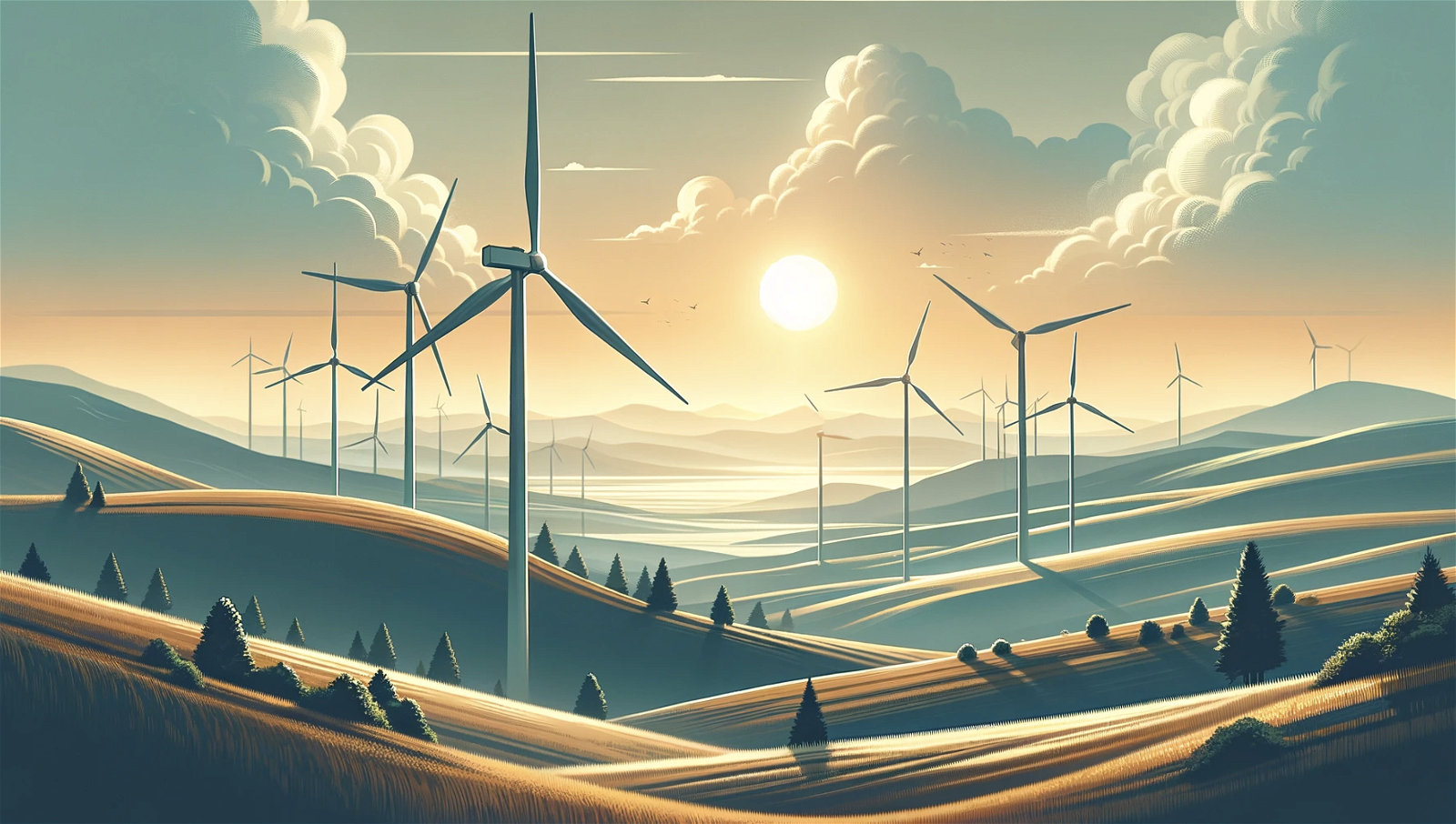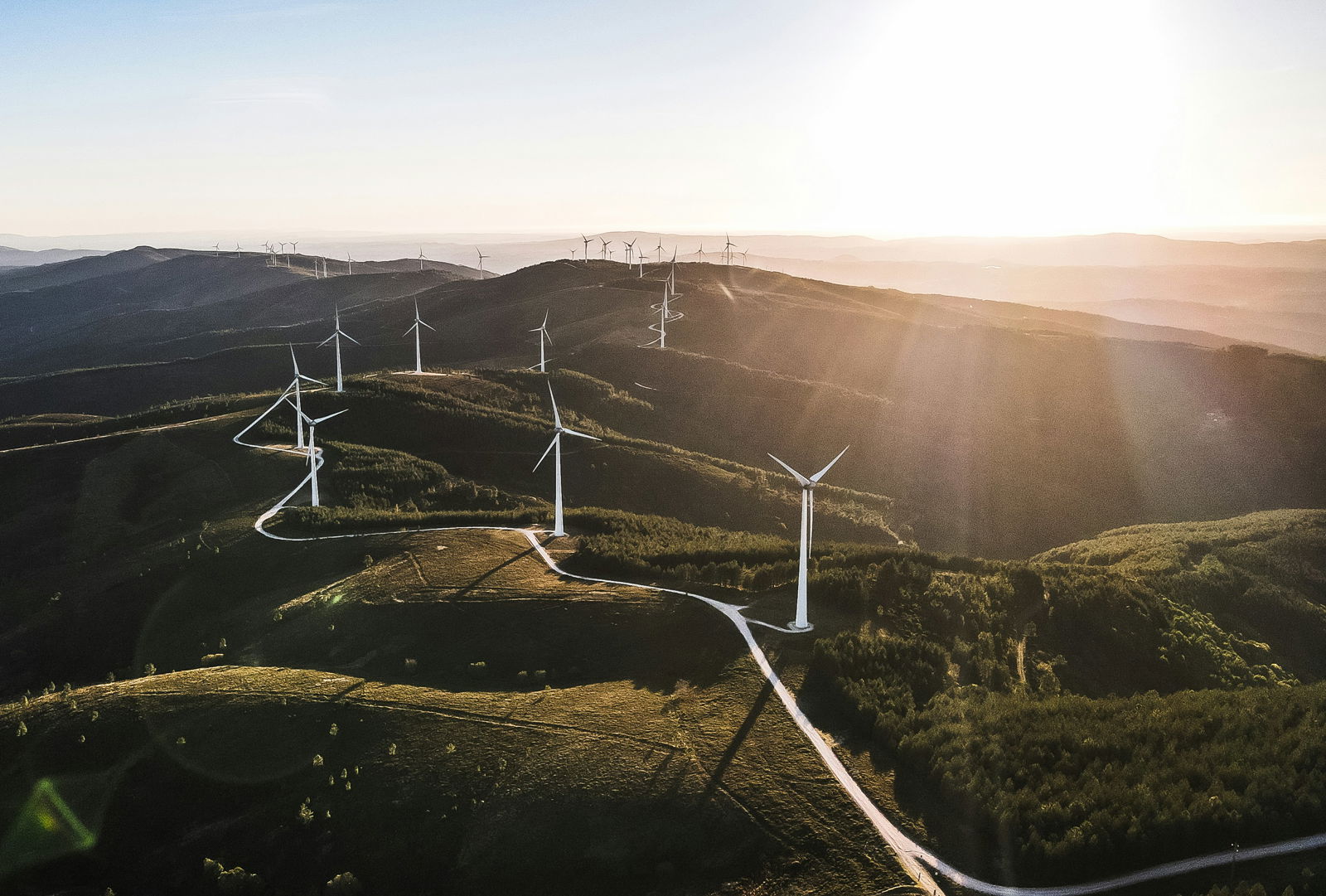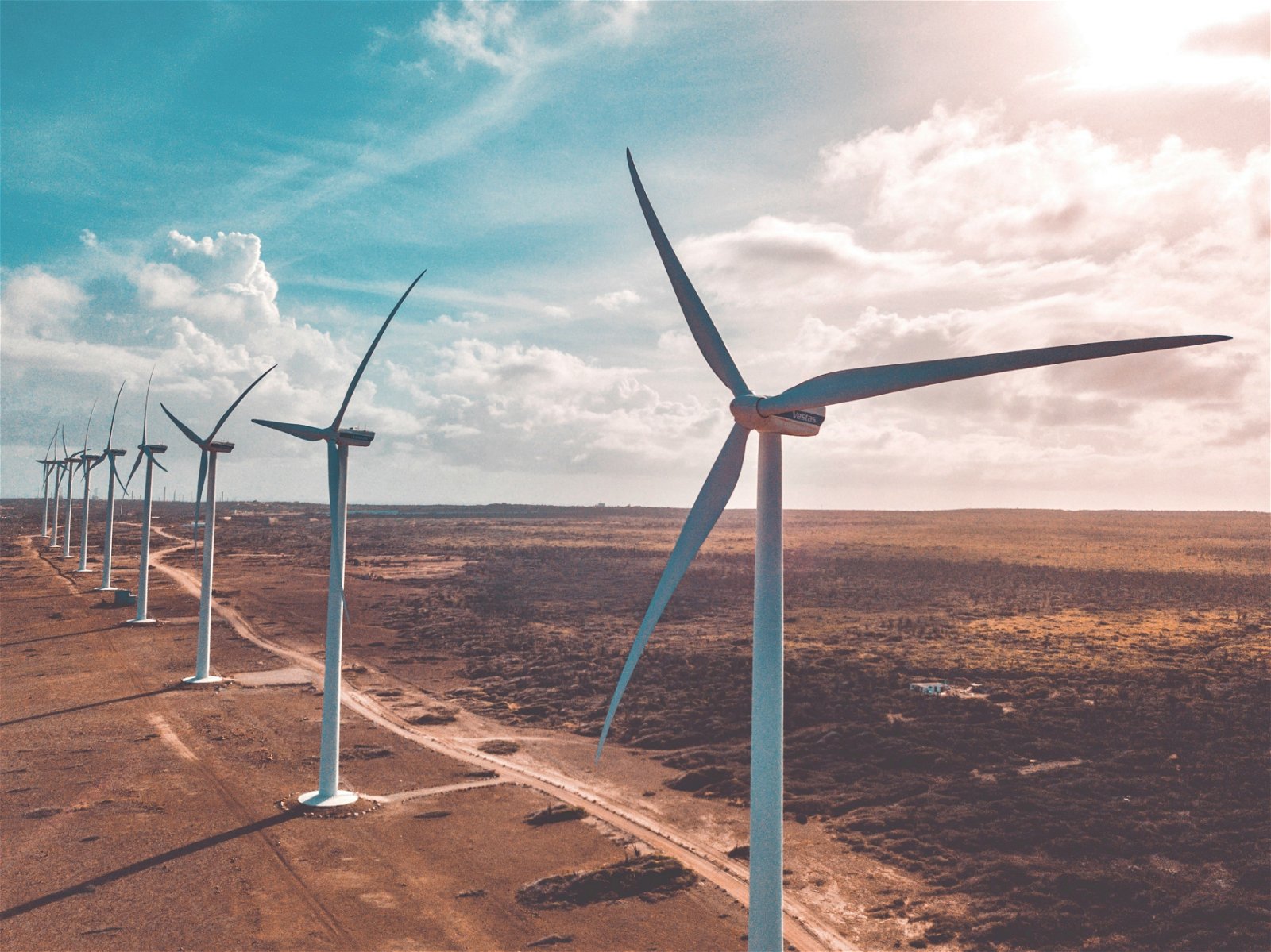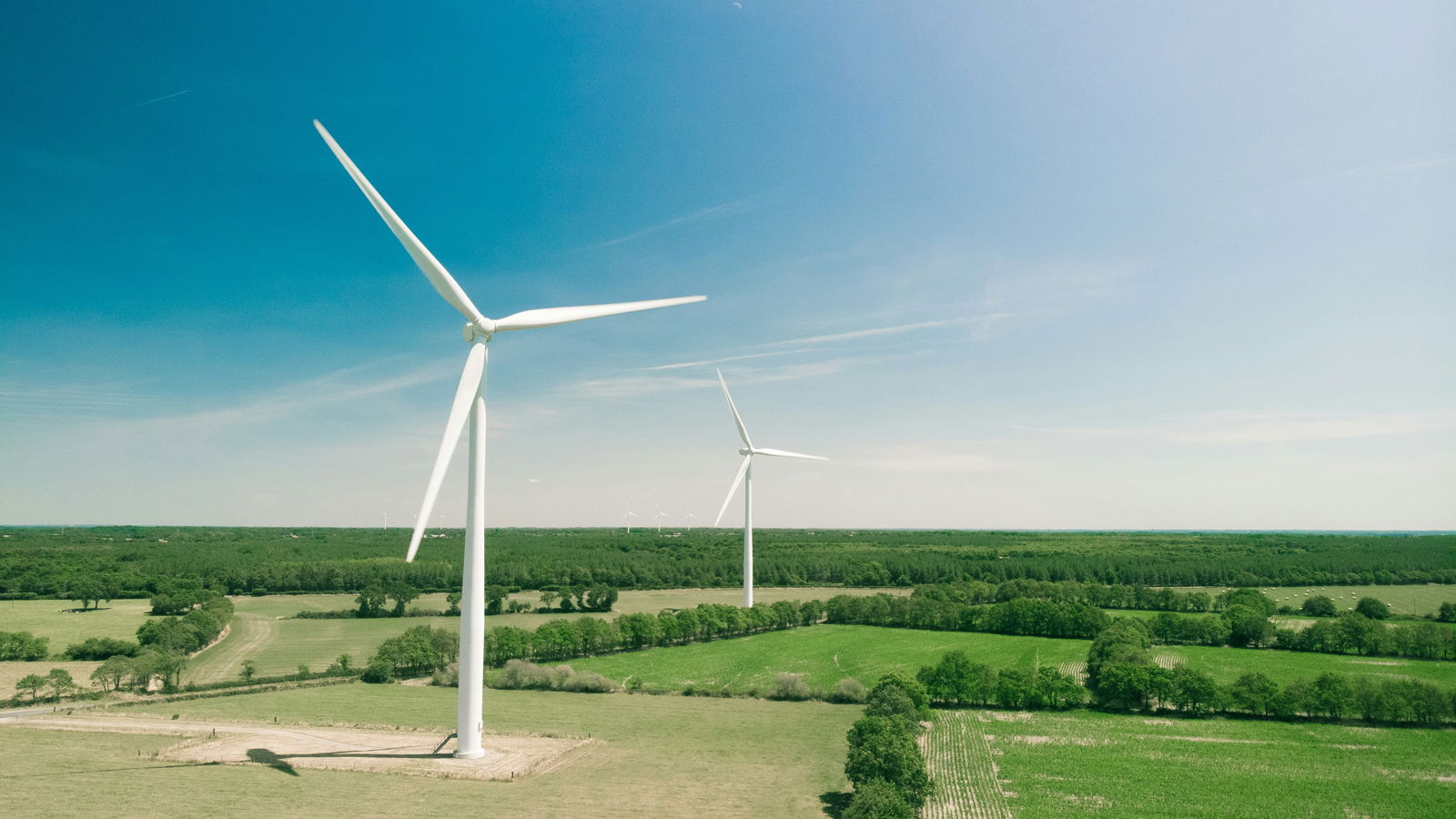Examining the pros and cons of wind energy


· 9 min read

Our over-reliance on non-renewable energy sources has resulted in negative environmental impacts. Burning fossil fuels, such as coal, oil, and gas, releases large amounts of greenhouse gasses, trapping the sun’s heat and increasing global temperature.
Non-renewable energy sources are responsible for over 75% of global greenhouse gas emissions and 90% of carbon dioxide emissions.
That’s why the transition toward renewable and clean energy is needed. One energy source that’s available in abundance is wind energy, which is a form of renewable energy that uses the wind to generate electricity.
Despite its obvious strengths, there are still disadvantages of wind energy. Let’s get to know more about how wind energy is created, the pros and cons of wind energy, and how to mitigate its limitations.
The wind is created by several factors like the sun unevenly heating the atmosphere, irregularities on the earth’s surface, and rotation of the earth. Wind turbines leverage off the wind to create energy which varies greatly across the earth according to bodies of water, vegetation, and differences in terrain.
The kinetic energy from wind is converted into electricity by aerodynamic force from rotor blades, similar to how an airplane wing works. The difference in pressure makes the blades move, then a generator translates the mechanical energy into electricity. Here are three different applications of wind turbines.

A land-based wind turbine is located on land and ranges from 100 kilowatts to several megawatts. These turbines are usually installed in remote areas so the noise pollution won’t affect surrounding communities.

Offshore wind turbines tend to be massive to capture the vast amount of powerful ocean winds. Electricity is then transported back to land through cable systems buried in the sea floor. An average offshore wind turbine produces 2.5 to 3 megawatts each.
Smaller wind turbines are typically used for commercial and residential applications. These turbines typically have a capacity below 100 kilowatt hours.
These are the benefits of wind power as a renewable energy source.
Wind energy reduces the amount of greenhouse gases. Generating energy from wind power doesn’t release carbon emissions into the atmosphere, unlike conventional energy derived from fossil fuels. It’s a very clean energy source with no waste at all.
Wind energy consumes less water, making it available for other uses. It’s estimated that several forms of renewable energies, such as wind, solar, and photovoltaic reduce 97% water consumption compared to generation of non-renewable energies.
Wind power can create job opportunities for local communities. In the US, over 125,000 people are working in the wind energy industry, ranging from blade manufacturers and asset managers to turbine service technicians.
Benefits local governments in the form of state and local tax payments and land-lease payments from turbine sites. It’s estimated that wind projects are paid up to USD 2 billion, money that can be used by local communities for school budgets or local infrastructures.
Wind energy has low operating costs because there are no fuel expenses. This protects consumers from fluctuating natural gas or coal prices. It’s also easier to manage compared to other renewable energy sources, making it the most cost-effective system in the long run.
It’s inexhaustible and abundant. We’ll never run out of wind energy, and capturing it doesn’t deplete our natural sources, just like solar power.
It can be used in a variety of applications and is very adaptable. We can use smaller turbines for households or bigger ones for businesses or to power a whole community. It’s also a great companion for remote applications such as water pumping or telecommunication sites.
Despite its benefits, there are several downsides to wind energy.
Wind energy is a variable resource as in we can’t predict and generate it on demand. There’s a possibility that wind farms can only supply much less than their supposed capacities. Sites with more wind can take more advantage of wind energy, while some sites may have an inadequate energy supply. For example, the average capacity factor in Germany’s wind farms was only 18.3%, while Britain’s was 26.1%
It can be expensive to set up. The cost of installing wind turbines is 38% higher in 2023 compared to 2021. This change was driven by increasing prices of raw materials needed in wind systems like steel, copper, zinc, manganese, chromium, nickel, molybdenum, and rare earths.
Wind turbines create sounds when they’re working, which might disturb local communities or wildlife. Turbines have a relatively weak but distinctive noise due to the movement of the blades. Exposure to wind turbine noise may increase the risk of annoyance, so large wind farms have to be a certain amount of distance from residential areas.
Endangering wildlife and local ecosystems. Creating a wind farm means clearing land, which could disturb the local ecosystem. There’s also the danger of hurting flying animals due to the turning blades. It’s reported that wind power plants kill hundreds of thousands of birds and bats in North America.
To avoid noise and visual pollution and capture more wind, turbines are often placed in more rural areas. This creates a supply chain issue, both in terms of building the infrastructure and transferring the energy into places that demand it. Building wind farms in remote locations means higher operation and maintenance costs and transporting the generated energy to urban areas requires a complex network or costly energy storage technology.

Wind energy may have its own set of challenges, but thanks to research and technological advancements, we may be able to solve those issues.
Use more offshore wind resources that are abundant and more stable. This is apparent in the US, where the majority of wind power comes from. According to the National Renewable Energy Laboratory, offshore wind farms can generate 4,200 gigawatts of capacity or 13,500 terawatt-hours per year. Aside from its stability, offshore sites could also be used to solve noise pollution.
Collaboration within the wind power industry and academia to address issues such as logistical challenges, permitting, siting, minimizing environmental impacts, and developing infrastructure.
Implementing policies for raw material pricing. The government could impose a price ceiling for materials used in the wind industry to accelerate its growth. This makes wind energy much more appealing for both household and large-scale projects.
Several methods have been proposed to make turbines more wildlife-friendly. Some of them are curtailment or shutting it off during a lower wind speed, ultrasonic deterrents to ward off wildlife, painting the blades black to make them more visible, video surveillance, and tweaking the optimum height to avoid collision.
Use of innovation and technology to map out the best places for wind turbines. Scientists and innovators are now able to use algorithms, Geographical Information Systems (GIS), and others to pinpoint places that are suitable for wind turbines.
Use energy systems such as lithium-ion batteries to store wind energy and solve variability issues.
The advantages of wind energy are that it’s a clean source, benefits local communities, enables economic growth, is cost-effective, and works in different settings. Its cons include the need for remote locations, impact on local wildlife, noise, and visual pollution, and not being very reliable due to the variability of wind in certain areas.
Because wind energy is a renewable resource that’s abundant and inexhaustible. It’s also able to provide electricity without needing to pollute the air with carbon emissions.
One of the major issues with wind energy production is its turbines, which create noise pollution and present danger to wildlife. Solutions include placing them in remote locations and changing the design of turbines to avoid collisions with birds and bats.
Wind energy is not very reliable as it depends on the weather. We would always need a backup generator to cover constant electricity demands if we’re only relying on wind farms. Thankfully, with more advancements in technology for the wind energy sector, hopefully, we’ll be able to solve this issue.

Wind is a form of renewable energy source that has vast potential. It reduces greenhouse gas emissions, uses less water, is low maintenance, is abundant, and is adaptable. Although it has several disadvantages, with collaborative efforts, research, and innovation, solutions can easily be implemented. With these solutions, we’ll be able to take full advantage of wind energy and head towards a more sustainable future.
Advantages and challenges of wind energy. (n.d.). Energy.gov. https://www.energy.gov/eere/wind/advantages-and-challenges-wind-energy
Ferris, N., & Ferris, N. (2023, April 25). Data insight: the cost of a wind turbine has increased by 38% in two years. Energy Monitor. https://www.energymonitor.ai/renewables/data-insight-the-cost-of-a-wind-turbine-has-increased-by-38-in-two-years/
How do wind turbines work? (n.d.). Energy.gov. https://www.energy.gov/eere/wind/how-do-wind-turbines-work
How reliable are wind farms? (2022, June 2). World Economic Forum. https://www.weforum.org/agenda/2015/01/how-reliable-is-wind-power/
Reve. (2020, January 17). Wind power and solar energy will reduce 97% of water consumption in electricity generation | REVE News of the wind sector in Spain and in the world. https://www.evwind.es/2020/01/17/wind-power-and-solar-energy-will-reduce-97-of-water-consumption-in-electricity-generation/73109
Top 10 things you didn’t know about Offshore wind energy. (n.d.). Energy.gov. https://www.energy.gov/eere/wind/articles/top-10-things-you-didnt-know-about-offshore-wind-energy
United Nations. (n.d.). Renewable energy – powering a safer future | United Nations. https://www.un.org/en/climatechange/raising-ambition/renewable-energy
Wind turbines. (n.d.). The Danish Environmental Protection Agency. https://eng.mst.dk/industry/noise/wind-turbines
WINDExchange: What is wind Power? (n.d.). https://windexchange.energy.gov/what-is-wind
Zimmer, K. (2023). How wind turbines could coexist peacefully with bats and birds. Knowable Magazine. https://doi.org/10.1146/knowable-110823-1
illuminem briefings

Wind · Renewables
illuminem briefings

Geothermal · AI
illuminem briefings

Solar · Renewables
Associated Press

Wind · Renewables
Earth.Org

Solar · Renewables
Oil Price

Renewables · Energy